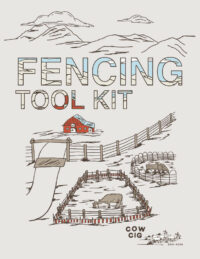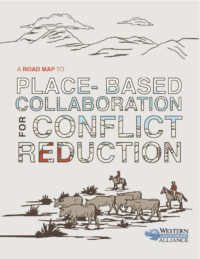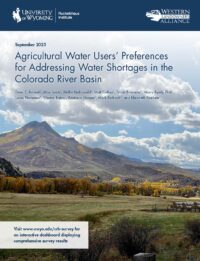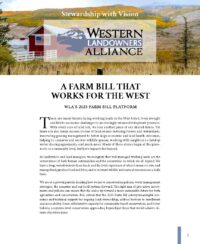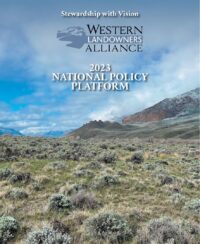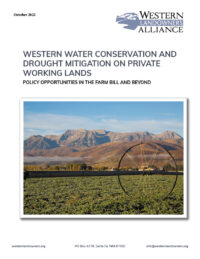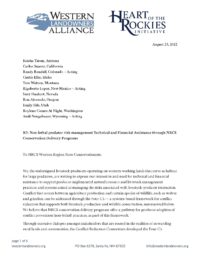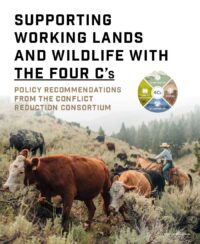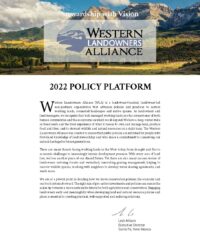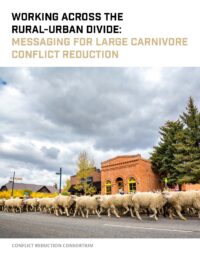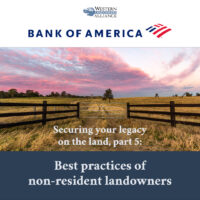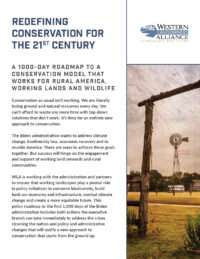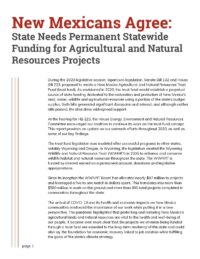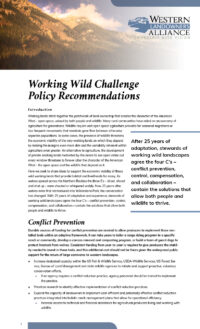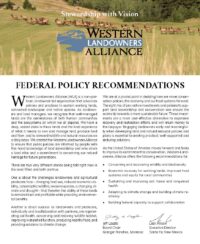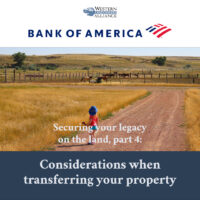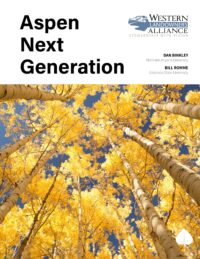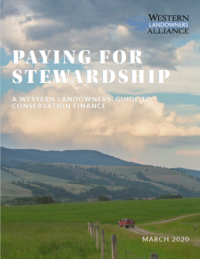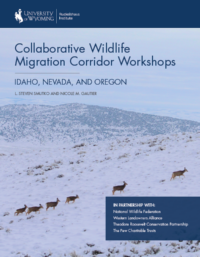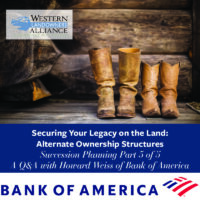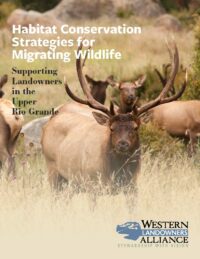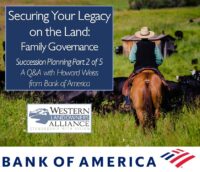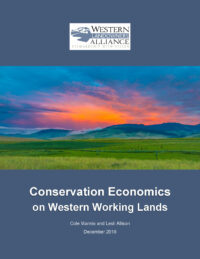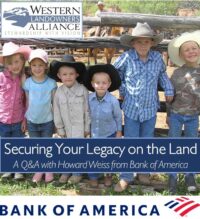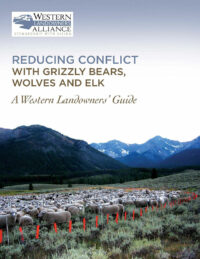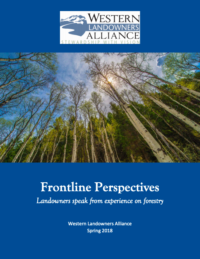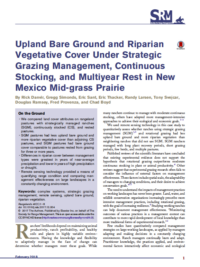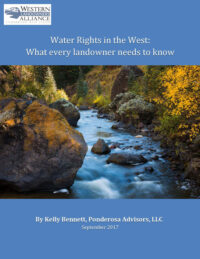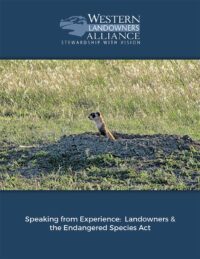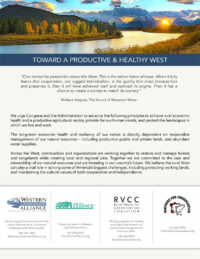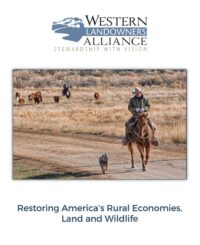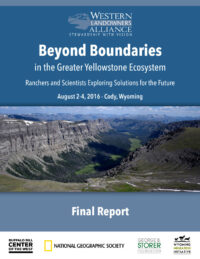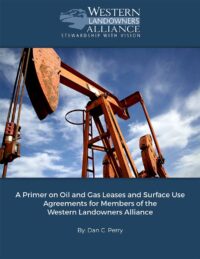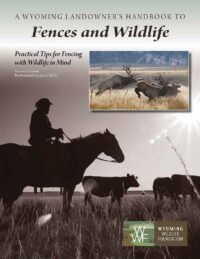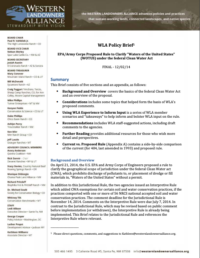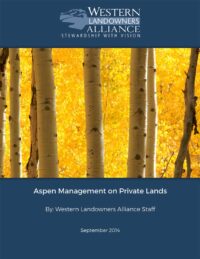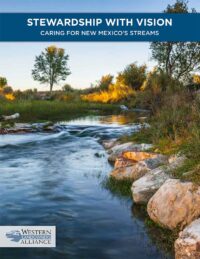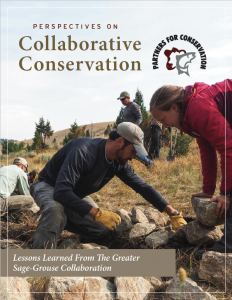FEATURED PUBLICATION
Wildlife Migration Conservation Strategies on Private Lands
Protecting the long migratory pathways of ungulates like elk, deer and pronghorn requires collaboration across landownership boundaries and the ability to work with private landowners effectively. We looked at the tools that are being and could be used to support private landowners in conserving migration corridors in the Upper Rio Grande. The lessons we learned, and summarize in this toolkit, are applicable across the West.
Complete Library
| Arizona, Colorado, conflict reduction, Idaho, Montana, New Mexico, Oregon, range riding, Working Wild Challenge, Wyoming
Range Riding Producer Tool Kit
Range riding is a long-used and flexible practice, making it a beneficial conflict reduction tool for use in diverse, ever-changing western landscapes. The overarching goal of range riding for predator…
| conflict reduction, grizzly bears, Wolves, Working Wild Challenge
Electric Fencing Producer Tool Kit
Fencing, turbo fladry and electric drive over mats are tools that can be used to deter conflict through exclusion of large carnivores and/or containment of livestock. These temporary, semi-permanent or…
| conflict prevention, conflict reduction, grizzly bears, Wolves, Working Wild Challenge
Carcass Management Producer Tool Kit
Across the West, carcass management is increasingly recognized as an important part of systems-based livestock and predator conflict prevention efforts and for its role in increasing human safety on the…
| conflict reduction, grizzly bears, Wolves, Working Wild Challenge
A road map to place-based collaboration for conflict reduction
Place-based collaborative groups offer a means to coordinate community-scale action to address wildlife-livestock conflicts, and processes to lift landowner and livestock producer needs, while finding areas of agreement and shared…
Agricultural Water Users’ Preferences for Addressing Water Shortages in the Colorado River Basin
The Colorado River Basin is in crisis. There is no longer enough water for all of those who depend on it. The agricultural sector is the largest water user in…
| Policy
A Farm Bill that works for the West
WLA’s 2023 Farm Bill Platform There are many threats facing working lands in the West today, from drought and fire to economic challenges to increasingly intense development pressure. With every…
| Policy
2023 National Policy Platform
As landowners and land managers, we recognize that well-managed working lands are the cornerstones of both human communities and the ecosystems on which we all depend. We know what it…
Western water conservation and drought mitigation on private working lands
Policy opportunities in the farm bill and beyond The western United States continues to face extended and increasingly severe drought conditions that threaten municipal and agricultural water supplies, energy production,…
Letter to NRCS Re: Non-lethal predator risk management
In this letter signed by hundreds of producers from around the West, we ask USDA’s Natural Resources Conservation Service staff to consider “technical and financial assistance to support producer-implemented natural…
| Working Wild Challenge
Supporting Working Lands and Wildlife with the Four C’s
Policy Recommendations from the Conflict Reduction Consortium Across the western US, iconic wildlife like elk, deer, grizzly bears, and wolves share lands with humans and their livestock. This comes with…
| Policy
2022 Policy Platform
As landowners and land managers, we recognize that well-managed working lands are the cornerstones of both human communities and the ecosystems on which we all depend. We have a deep,…
Working across the rural-urban divide: Messaging for large carnivore conflict reduction
Conflicts between large carnivores and livestock can be polarizing. The words used around large carnivore-livestock conflict reduction can either further polarize a sensitive situation or bring people together in a…
| succession planning
Securing Your Legacy on the Land, Part 5: Best Practices of Non-Resident Landowners
How is succession planning different for non-resident or “absentee” landowners? With this ownership type becoming more and more common in the West, how can these landowners best steward their investment to the next generation?
Redefining Conservation for the 21st Century
Our roadmap to a conservation model that works for rural America, working lands and wildlife. Conservation as usual isn’t working. We are literally losing ground and natural resources every day.…
| New Mexico
New Mexicans Agree
New Mexico needs permanent statewide funding for agricultural and natural resources projects
| Policy, Working Wild Challenge
Working Wild Challenge Policy Recommendations
Working lands stitch together the patchwork of land ownership that creates the character of the American West – open space, valued by both people and wildlife. Many rural communities have…
WLA’s Federal Policy Recommendations
As landowners and land managers, we recognize that well-managed lands are the cornerstones of both human communities and the ecosystems on which we all depend. We have a deep, vested…
| succession planning
Securing Your Legacy on the Land, Part 4: Considerations when transferring your property
How does one begin the task of planning for the transfer of a family business, real estate and farm or ranch?
Aspen Next Generation
Aspen trees and forests are especially important in the Rocky Mountains. Aspens add beauty to landscapes, foster high diversity and productivity of understory plants, provide for the habitat needs of many species of animals, and moderate fire behavior. There is a perception that aspen trees and stands are not regenerating well in southern Colorado and northern New Mexico; cohorts of trees younger than a few decades are scarce, at least in some areas. The next generation of aspen in the southern Rockies will be influenced by land use decisions, including harvesting, fire policy and management, and browsing by livestock and wildlife.
Paying for Stewardship
This guide presents some ways landowners can earn compensation for their stewardship efforts directly or indirectly—schemes sometimes referred to as payments for ecosystem services, ecosystem services markets, or conservation finance. It goes beyond description to provide illustrative case studies of these strategies at work.
Collaborative Wildlife Migration Corridor Workshops
This report provides an overview of the latest efforts towards migration corridor management in each of the three states, and reports findings from the workshops. The report summarizes the discussion by workshop participants about what is working in their state, as well as opportunities to improve migration corridor management and conservation.
Securing Your Legacy on the Land, Part 3: Alternate Ownership Structures
What factors should you consider when selecting an ownership structure for your ranch? What questions should you be sure to answer before deciding? What are differences between an LLC, a C Corporation, and an S Corporation? What are the benefits to partnership, cooperative or shared ownership structures, and what are the drawbacks? Why or when would someone choose a less common ownership structure?
Habitat Conservation Strategies for Migrating Wildlife
Landowner perspectives gained through one-on-one interviews and focus groups throughout the Upper Rio Grande region provide the foundation for the recommendations contained within this toolkit. These perspectives are shared side-by-side with concise strategies for policymakers, funders, and organizations looking to improve wildlife habitat in this dynamic trans-boundary region of Colorado and New Mexico.
Securing Your Legacy on the Land, Part 2: Family Governance
What defines “family governance” and what key factors drive the type of governance structure a family puts into place? How does one effectively integrate family members into its governing structure? What are some governance issues one encounters when creating and administering trusts?
Conservation Economics on Western Working Lands
Conservation is a form of economics What policy conditions would empower landowners to allocate time, talent and resources to biodiversity and connectivity? This question is the center of this paper,…
Securing Your Legacy on the Land, Part 1
When should a succession plan be put in place? Who should be involved? What are the basic components of a farm or ranch business succession plan? Who can help put it in place?
Reducing Conflict with Grizzly Bears, Wolves and Elk
In this guide, WLA offers the collective knowledge and hands-on experience of over 30 land, livestock and resource managers constructively engaged in one of the greatest conservation challenges of our time: how to share and manage a wild, working landscape that sustains both people and wildlife.
Frontline Perspectives
Landowners speak from experience on forestry The American West is home to some of our nation’s most iconic forests. WLA staff interviewed landowners throughout the West to gain their perspective…
| monitoring, science
Upland Bare Ground and Riparian Vegetative Cover Under Strategic Grazing Management, Continuous Stocking, and Multiyear Rest in New Mexico Mid-grass Prairie
By Rick Danvir, Gregg Simonds, Eric Sant, Eric Thacker, Randy Larsen, Tony Svejcar, Douglas Ramsey, Fred Provenza, and Chad Boyd Journal article published in February 2018 issue of Rangelands, the…
Water Rights in the West
Few things are as crucial to ranch operations as water. Getting a handle on your water rights may seem akin to drinking from a fire hose, but it is wildly important. Western water is complex, contentious, and rooted in rich history. This must-read article will help you keep your head above water.
Speaking from Experience: Landowners & the Endangered Species Act
This informative guide on the Endangered Species Act provides essential information on the law itself, changes currently being proposed and perspectives from experienced landowners.
Toward a Healthy & Productive West
Six common sense principles endorsed by more than 130 organizations light the path to a better West. We urge Congress and the Administration to advance these principles to achieve rural economic health and a productive agricultural sector, provide for our human needs, and protect the landscapes in which we live and work.
Restoring America’s Rural Economies, Land and Wildlife
The land and people of rural America are the foundation of our national economy and way of life, providing the food, water, energy and wildlife upon which we all depend. Yet rural America is struggling and working lands are disappearing. With the right public policies and strategic investments we can change this. Read WLA’s 2017 policy platform to learn more.
Beyond Boundaries in the Greater Yellowstone Ecosystem
In Summer 2016, WLA co-hosted the Beyond Boundaries Landowner Symposium in Cody, Wyoming, which included discussions on emerging science and new policies related to working lands and private ownership in the Greater Yellowstone Ecosystem and beyond. This is the report of that gathering.
A Primer on Oil and Gas Leases
Written by an oil and gas attorney, this is a must read resource written specifically to inform landowners about oil and gas leases and surface use agreements.
A Wyoming Landowners Handbook to Fences and Wildlife
In this vital guide’s second edition, revised and updated in 2015, from the Wyoming Wildlife Foundation, building effective yet wildlife-friendly fencing is beautifully illustrated and clearly explained.
| WOTUS
WLA Policy Brief on the Waters of the United States (WOTUS) Rule
This Brief consists of five sections and an appendix, as follows: Background and Overview covers the basics of the federal Clean Water Act and an overview of the proposal. Considerations…
Aspen Management on Private Lands
Highlighting strategies to restore this beautiful species The decline of aspen in western forests over the past several decades has been a significant concern to scientists, foresters and land managers,…
Stewardship with Vision
Caring for New Mexico’s Streams Private stewardship of Western land and water plays a vital role in the health of the West. This must-read guide highlights the importance of New…
External Resources
Perspectives on Collaborative Conservation: Lessons Learned from the Greater Sage-Grouse Collaboration
The collaborative partnerships that developed from 2010 to 2015 have been recognized as a key reason why the greater sage-grouse was kept off the federal endangered species list. But what made these efforts unique? What can we learn from the greater sage-grouse saga to apply to other conservation challenges?
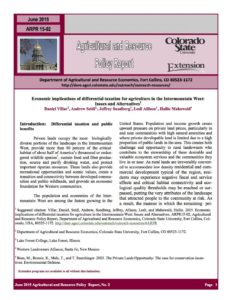
Economic implications of differential taxation for agriculture in the Intermountain West
Property tax incentives for diversified management have the potential to provide significant economic and environmental benefits to states and local communities.
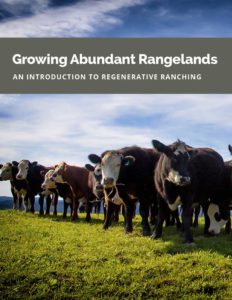
Growing Abundant Ranges
With recommendations for planning, practicing and monitoring grazing management, this guide is designed to help practitioners significantly improve soil health, water retention and pasture productivity.
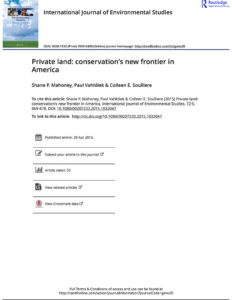
Private Land: Conservation’s New Frontier in America
An insightful paper on the private land conservation movement by WLA’s founding board chair Paul Vahldiek and High Lonesome Institute Director Shane Mahoney.
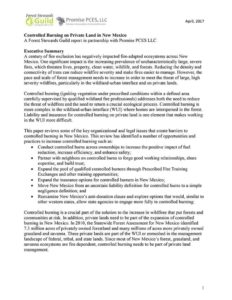
Controlled Burning on Private Land in New Mexico
This paper reviews some of the key organizational and legal issues that create barriers to controlled burning in New Mexico and has identified a number of opportunities and practices to increase controlled burning.
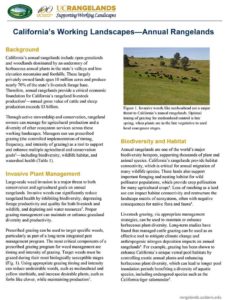
California's Working Landscapes: Annual Rangelands
Through active stewardship and conservation, rangeland owners can manage for agricultural production and a diversity of other ecosystem services across working landscapes.
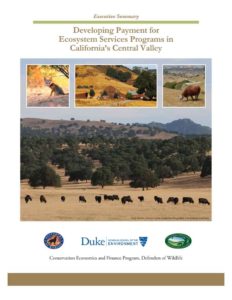
Developing Payment for Ecosystem Services Programs in California’s Central Valley
Payment for Ecosystem Services programs and markets are a promising alternative to traditional conservation initiatives and can help California’s ranchers stay on their land.
Join WLA to stay up to date on the most important news and policy for land stewards.
Become a member for free today and we will send you the news and policy developments critical to the economic and ecological health of working lands.
WLA works on behalf of landowners and practitioners throughout the West. We will never share your contact information with anyone.


